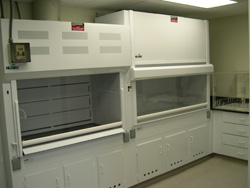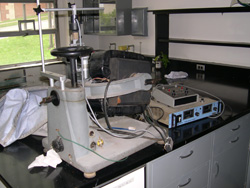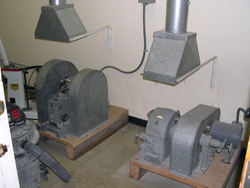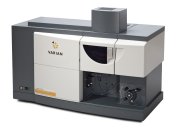David W Peate
Research
page maintained by
David Peate © 2009
Facilities Available for Petrological & Geochemical Research in the University of Iowa
*** coming soon ***
Quadrupole ICP-MS + laser ablation (B21G)
We have just received (August 2008) funding from the NSF MRI program and the University of Iowa to establish a trace element analysis lab at Iowa. We will be setting up a quadrupole ICP-MS plus 213nm laser ablation system early in 2009, once lab renovations are completed.
contact Dr David W Peate for further information.

Clean Laboratory (B40 TH)
This 350 sq.ft. metal-free clean laboratory has two laminar flow work stations, two fume hoods, a Millipore ultrapure water system, a separate weighing room with two Sartorious balances (Genius analytical balance and Expert top-loading balance), an Analab closed environment evaporation system, two centrifuges, an ultrasonic bath, two Savillex acid stills, five temperature-controllled hot plates, and miscellaneous other items (including Parr bombs).
contact Dr David W Peate for further information.

General Laboratory (B35B TH)
This room is used as a general purpose laboratory for chemistry and mineral separations. It has a fume hood, a Frantz magnetic separator, furnaces for flux fusion sample digestions, a drying oven, a large, explosion-proof centrifuge, and a stand-alone laminar flow workbox for chemical separations. It also has proper windows to the outside world (a novelty for the basement rooms), allowing the lab users to truly appreciate the wonderful Iowa weather throughout all the four seasons. There is a Deltech 1-atm gas mixing furnace that we use to homogenize melt inclusions under controlled redox conditions.
contact Dr David W Peate or Dr Ingrid Ukstins Peate for further information.
Digital Imaging Facility (B36 TH)
This room contains research petrological and binocular microscopes, together with slide and photo scanners linked to a high-end Mac computer. We have an Olympus BX51 Polarizing Microscope, with DIC attachment to allow Nomarski interfence imaging of crystal zonation, and an Olympus SZX7 stereo microscope for mineral picking. An Olympus DP70 12.5 Mpixel digital camera linked to Dell PC can be used with both the petrological microscope and the binocular microscope. We also have a Nuclide luminoscope for cathodoluminescence analysis donated by Bob Brenner on his retirement.
contact Dr Ingrid Ukstins Peate for further information.
Alpha & Gamma Counting Facility (B35B TH and B21F TH)
These rooms contain chemistry facilities and alpha- and gamma-counting detectors to allow measurement of the short-lived U-series nuclides such as 210Po and 226Ra.
contact Dr Mark Reagan for further information.
Mineral Separation Facility (B1 TH)
This room contains a shaker table for initial separation of zircons and other heavy minerals.
contact Dr Bill McClelland for further information.

Scanning Electron Microscope (B21H TH)
A Hitachi S-3400N scanning electron microscope was recently installed in the basement of Trowbridge Hall. It is operated by the University of Iowa Central Microscopy Facility. This SEM can be run in variable-pressure mode and has an EDS system for quantitative compositional analysis.
contact Central Microscopy Facility for further information.

Sample Preparation Facilities (B2 TH and B14 TH)
Rock crushing facilities are located in Room B2. This room contains a jaw crusher, a disk-grinder, a tema mill for fine powdering of samples, a sieve shaker, and an area for hand-splitting of samples. Importantly, it has an excellent air extraction system which really keeps dust levels to a minimum, thus providing a better working environment for users. This also includes a vented table top area where hand sieving of samples can be carried out under dust-free conditions.
The Geoscience Department has extensive facilities for sample mounting, thin section preparation, and sample polishing that are located in Room B14. This room contains numerous rock saws, thin section saws and grinders, sample polishers, and a drying oven.
contact Matt Wortel for further information.

Inductively-Coupled Plasma Optical Emission Spectrometer (ICP-OES)
The Department of Chemistry has a new Varian 720-ES ICP-OES instrument that is available for use to determine major and certain trace element concentrations in digested rock samples.

